The Rococo period, which dominated the 18th century, emerged in Paris around 1720 and swiftly spread across France and throughout Europe, reaching Italy, Germany, Russia, and Austria. It arose as a direct response to the opulent and weighty Baroque style that preceded it, offering a contrasting vision of delicate grace and whimsical charm. Rococo painters employed warm pastel colors, chosen for their pleasing visual appeal, diverging from natural hues.
In the early stages of the Rococo movement, artists enthusiastically embraced the style, creating intricate works adorned with flowing curves and captivating scenes. Following the passing of King Louis XIV in 1715, numerous affluent French families bid farewell to the royal splendor of Versailles and relocated to private residences in the bustling city of Paris.
This transition ushered in a prevailing trend that shaped the cultural landscape of France—the Rococo movement. It embraced a spirit of abundance and exuberance, departing from the linear aesthetics of previous periods. The Rococo style embodied a sense of vitality and lavishness, breathing new life into the artistic expressions of the time.
In this article, we will look at the 10 most famous Rococo painters of all time:
Jean-Antoine Watteau
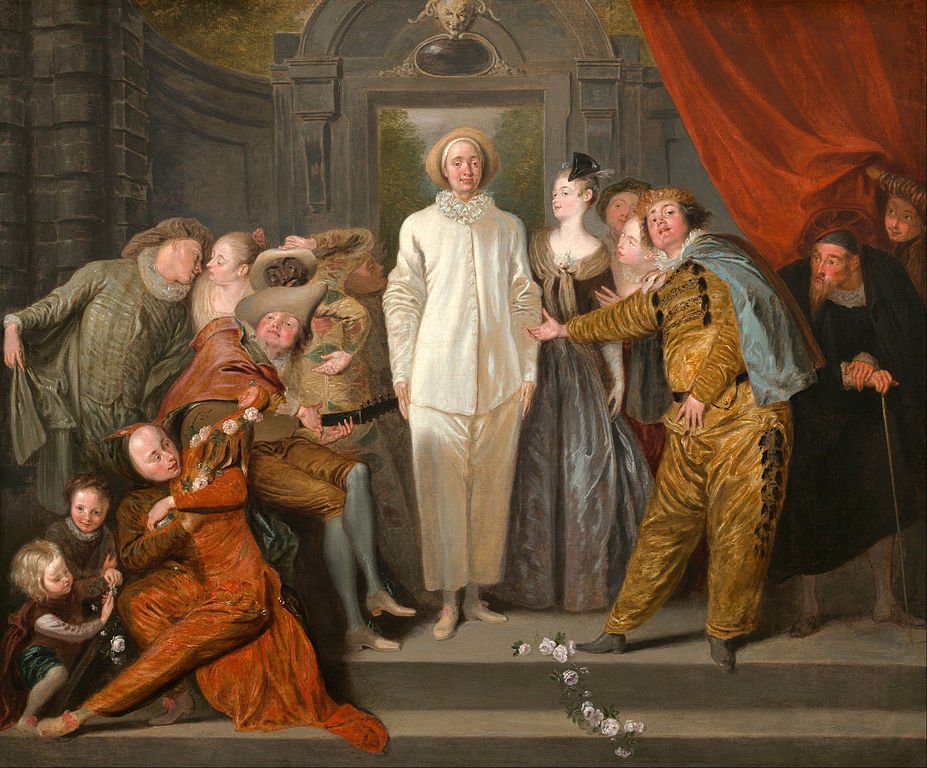
Jean-Antoine Watteau stands as the most notable artist of the Rococo period, often credited with the very birth of the Rococo painting itself. Drawing inspiration from Flemish master Peter Paul Rubens and renowned Venetian Renaissance artists like Titian and Paolo Veronese, Watteau created dynamic compositions that burst with vividly articulated colors.
Throughout his brief career, Watteau’s works became renowned for their exceptional vibrancy, as he carefully selected the most radiant hues to bring his art to life. His style had a profound influence on his contemporaries, inspiring other artists to delve deeper into the realms of movement and color. The figures in many of his iconic works possess a distinct theatrical quality, adding an air of drama to the scenes depicted. Notable pieces from Jean-Antoine Watteau’s career include “The Embarkation for Cythera” (1717), “Pierrot” (1719). Hand “Pilgrimage to the Isle of Cythera” (1717).
Jean-Antoine Watteau’s contributions to art history go beyond his role as a pioneer of Rococo painting. His ability to infuse his works with vibrant colors and theatricality left an indelible mark on the artistic landscape of his time and beyond.
François Boucher
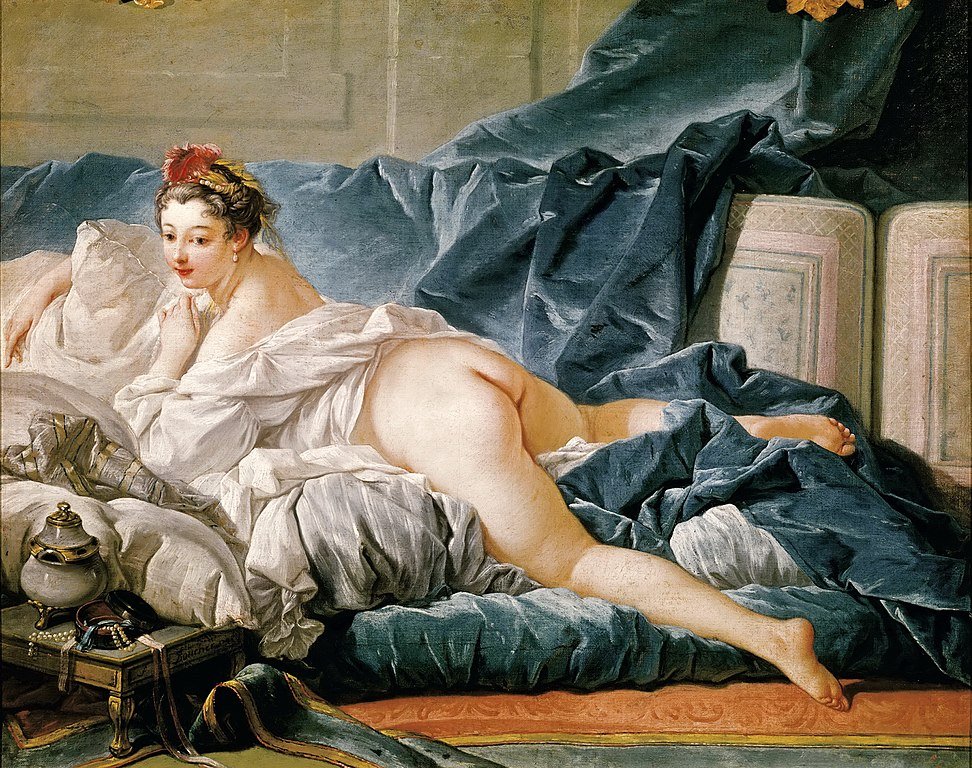
François Boucher, born on September 29, 1703, was one of the most famous artists of the Rococo movement, leaving an indelible mark on the art world. Hailing from Paris, he received his initial artistic training from his father, Nicolas Boucher, a painter of lesser renown. At the young age of seventeen, Boucher’s talent caught the eye of François Lemoyne, a prominent painter of the time.
Renowned for his captivating portrayals of mythological narratives derived from ancient Greek and Roman culture, Boucher’s artistic contributions resonated profoundly within the Rococo movement. His artistic journey led him to Italy, where he delved into the study of the late Baroque period and the flourishing landscape style prevalent in the Dutch regions of the time. It was during these formative years that Boucher’s distinctive approach to depicting figures, characterized by voluptuousness and sensuality, garnered immense fame and recognition among his French contemporaries.
Boucher’s rococo paintings often transported viewers to pastoral realms, depicting shepherds and their livestock in idyllic meadows. These scenes exuded a sense of tranquility and beauty. While his opus magnum, “Triumph of Venus” (1740), stands as an undeniable masterpiece, Boucher’s artistic brilliance extended far beyond. Throughout his lifetime, he achieved acclaim throughout Europe for works such as “The Grape Eaters” (1749) and “The Breakfast” (1739).
Canaletto
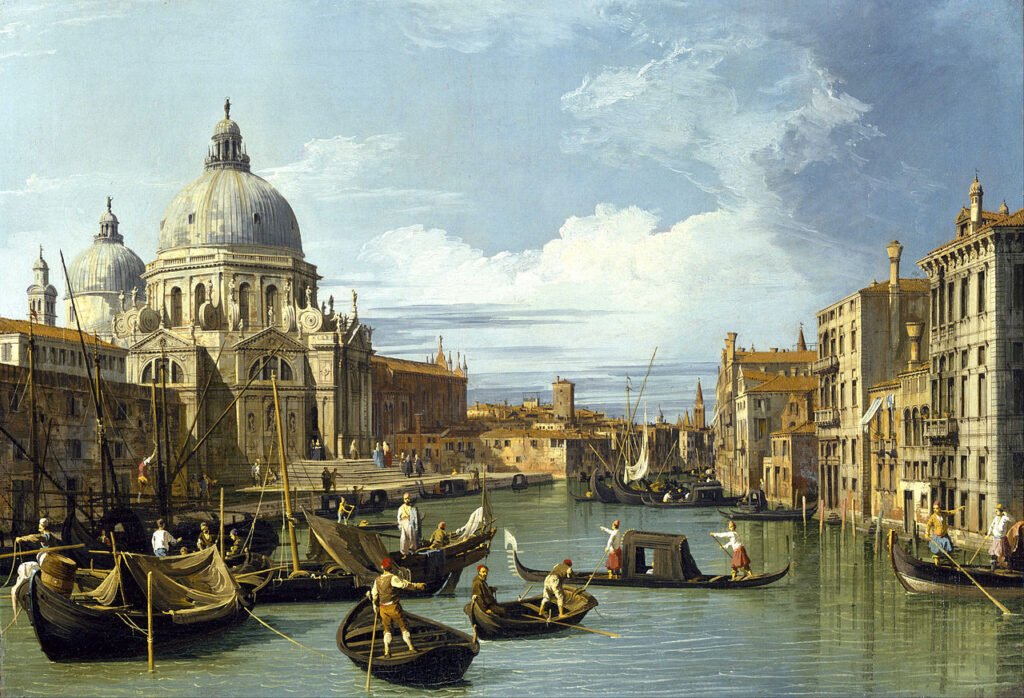
Giovanni Antonio Canal, widely known as Canaletto, was a highly regarded Italian painter from the Republic of Venice. Born on 18 October 1697, he was the son of the notable Italian painter Bernardo Canal, which inspired his famous moniker, Canalett. Canaletto held great significance as an artist within the context of the 18th-century Venetian school.
Canaletto’s exceptional talent lay in his ability to depict cityscapes with remarkable realism. Unlike the prevailing practice of completing paintings in the studio, he drew much of his early artwork “from nature,” capturing scenes directly from life. While some of his later works did adopt the studio method, his distinct style was characterized by distant figures portrayed as vibrant blobs of color, a technique that may have been influenced by the use of a camera obscura, lending a blurred effect to objects in the distance.
Throughout his lifetime, Canaletto embarked on extensive travels across Europe, meticulously painting scenes from renowned cities he visited. Notably, his youth saw the creation of remarkable works such as “The Stonemason’s Yard” (1725) and “The Entrance to the Grand Canal, Venice” (1730). These paintings coincided with the emergence of the Rococo movement in France, which later spread to Italy partly due to Canaletto’s influential efforts.
Elisabeth Louise Vigée Le Brun
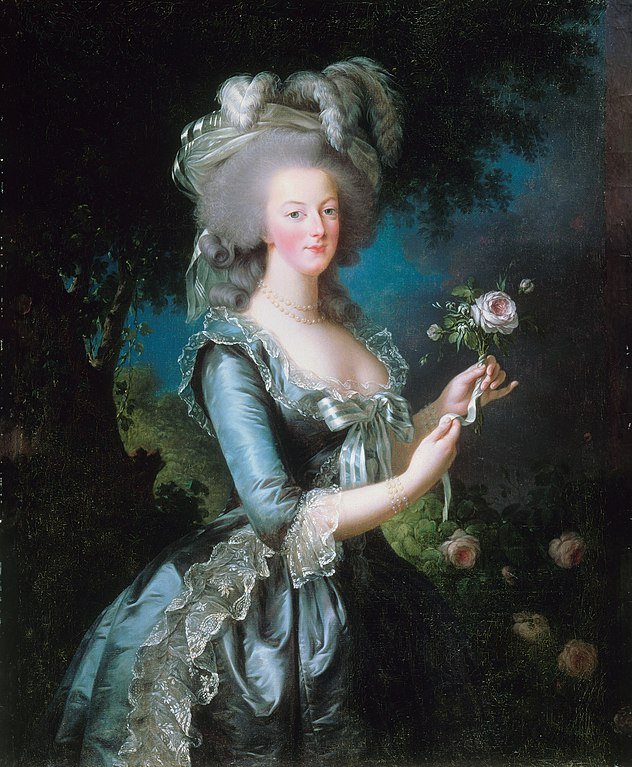
One of the most famous female artists in French history, Élisabeth Louise Vigée Le Brun was a renowned French portrait painter associated with the Rococo movement. Born on April 16, 1755. Her artistic talent blossomed during the late 18th and early 19th centuries. She gained widespread recognition for her exceptional ability to capture the essence of women through her exquisite portraits.
Le Brun’s artistic journey unfolded in an era when women were excluded from formal art academies and schools. Undeterred by societal constraints, she nurtured her skills under the guidance of her father, an esteemed artist in his own right. Remarkably, Le Brun embarked on her professional painting career at the tender age of 15. Despite facing criticism from a male-dominated art establishment, her exceptional talent caught the attention of Marie Antoinette and King Louis XVI, ultimately leading to her appointment at the Royal Academy when she was 28 years old.
Le Brun’s artistic style reflects the influence of both Rococo and Neoclassicism. While her subject matter and color palette aligns with Rococo aesthetics, her style evolved with the emergence of Neoclassical elements. Her portraits exude elegance and grace, capturing the essence of her subjects with finesse.
Giovanni Battista Tiepolo

Giovanni Battista Tiepolo, a Venetian painter of the mid-1700s, gained fame for his elaborate and opulent works that often depicted royalty. He received his artistic education from masters who were influenced by the High Renaissance, and his unique style emerged during the Rococo period, blending elements of Renaissance painting with the emerging artistic movement. Regarded as a significant figure of the 18th-century Venetian school, was a remarkably prolific artist who extended his influence beyond Italy to Germany and Spain.
In 1744, Tiepolo created one of the most iconic paintings of Cleopatra, “The Banquet of Cleopatra.” This masterpiece portrays a legendary banquet hosted by Cleopatra for Marc Antony, as described in Pliny’s Natural History and Plutarch’s Lives. Tiepolo’s interpretation reflects the lavishness of the Rococo style, with a grand hall adorned with flowing curtains and arches. Each figure in the painting is meticulously dressed in elegant attire, adding to the overall splendor of the scene.
Thomas Gainsborough
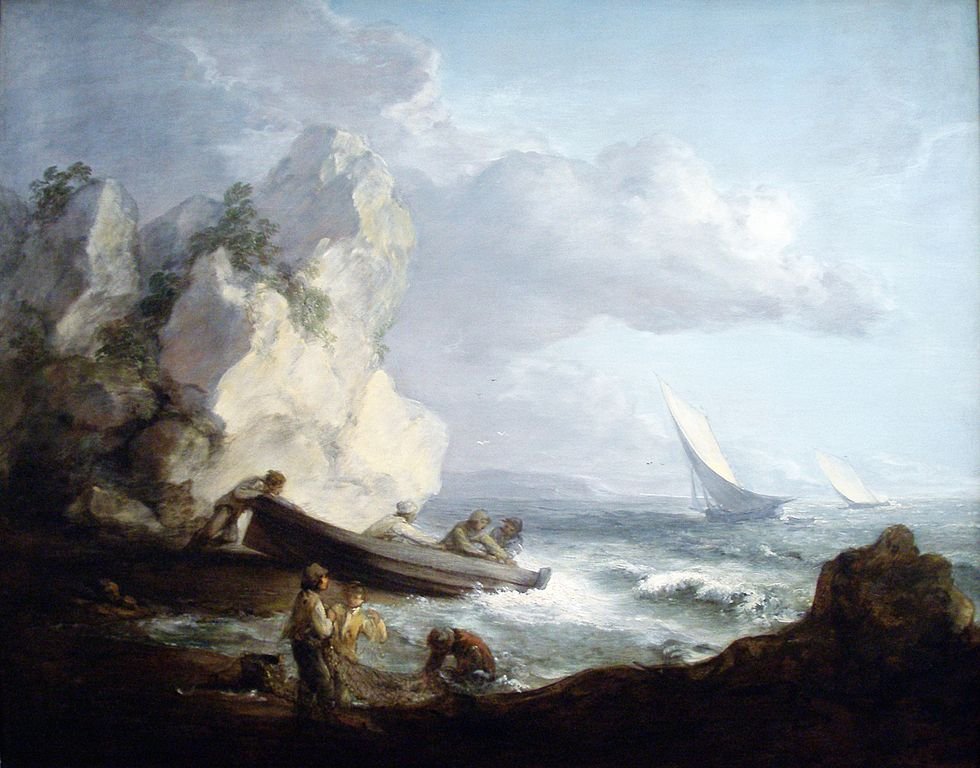
Thomas Gainsborough, a prominent figure in British art during the latter half of the 18th century, made significant contributions as an English painter specializing in portraits, landscapes, draughtsmanship, and printmaking.
Known for his swift and effortless technique, Gainsborough’s mature works feature a light color palette and fluid brushstrokes. Although he was highly accomplished in portrait painting, Gainsborough derived greater fulfillment from his landscape compositions. He is widely recognized as the founder of the 18th-century British landscape school, alongside fellow artist Richard Wilson.
He excelled in creating elegant landscapes and intricately detailed portraits. Influenced by the Rococo style that emerged in France, Gainsborough embraced its essence when it arrived in England around 1735 through the establishment of the St. Martin’s Lane Academy by Hubert François Gravelot. As a prominent member of this academy, Gainsborough skillfully merged his talents to produce captivating Rococo artworks that combined sweeping landscapes with exquisitely dressed figures.
Recognized as one of the most significant English painters of the 18th century, Gainsborough’s works garnered popularity among collectors starting from the 1850s, when Lionel de Rothschild began acquiring his portraits. The increasing value of Gainsborough’s and Reynolds’ paintings during the mid-19th century can be attributed, in part, to the Rothschild family, including Ferdinand de Rothschild, who actively collected and appreciated their art.
William Hogarth
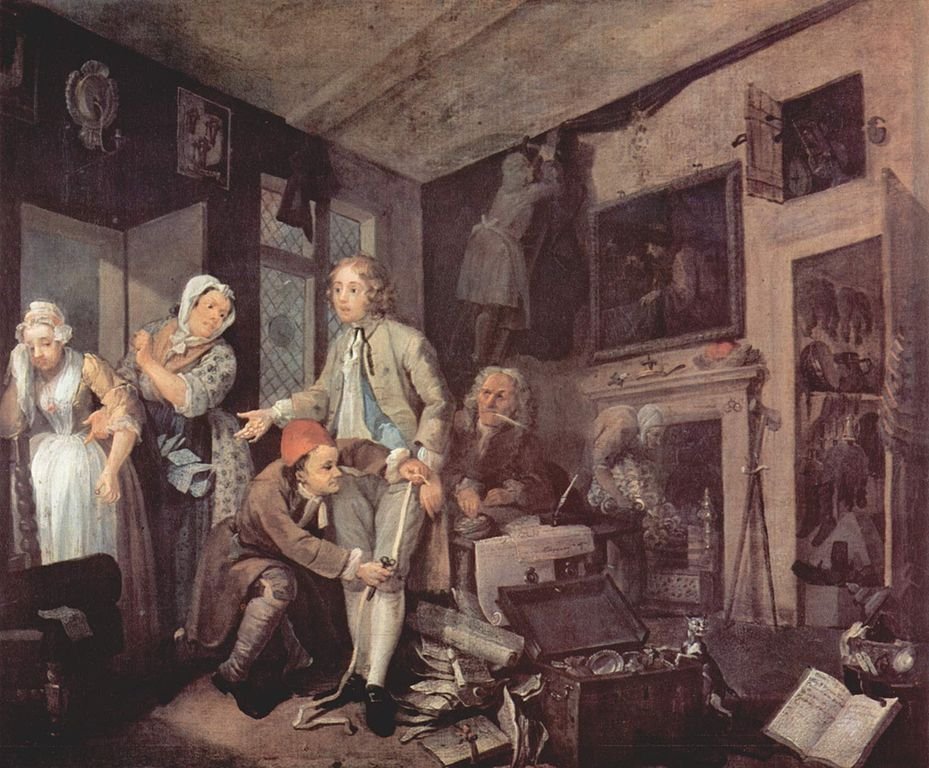
William Hogarth was an English painter, engraver, social critic, and occasional writer on art. He was born on November 10, 1697, in London, to a lower-middle-class family. Hogarth began his artistic journey as an apprentice to an engraver but did not finish the apprenticeship. He found inspiration in the works of French and Italian painters and engravers, skillfully merging satire and caricature to produce art that was clever, thought-provoking, and at times daring.
Hogarth’s art primarily consisted of satirical portrayals, often infused with bawdy and sexual themes, while maintaining a high level of realism. His works gained immense popularity and were widely reproduced through prints during his lifetime, establishing him as the most significant English artist of his era.
In 1731, Hogarth embarked on a series of moral works, beginning with “A Harlot’s Progress,” a collection of six scenes, originally created as paintings (now lost), but later published as engravings. The success of this initial series prompted the creation of a sequel titled “A Rake’s Progress,” which was produced between 1733 and 1735.
Jean-Baptiste-Siméon Chardin

Jean-Baptiste-Siméon Chardin was one of the most famous French Rococo painters despite his humble beginnings as the son of a cabinetmaker. An intriguing artist of the Rococo period, he was celebrated for his remarkable talent in creating incredibly realistic still-life masterpieces. He was among the pioneering French painters who ventured into the Rococo style and went on to become one of its prominent figures.
Chardin’s artistic prowess earned him recognition, leading to his acceptance into the esteemed Royal Academy. In 1724, he even served as a master on the Académie de Saint-Luc. His works were regularly exhibited at the Salon during the 1730s and 1740s, gaining admiration from art enthusiasts. He resided near Saint-Sulpice on the Left Bank until 1757 when King Louis XV bestowed upon him a studio and living space in the prestigious Louvre.
Joshua Reynolds
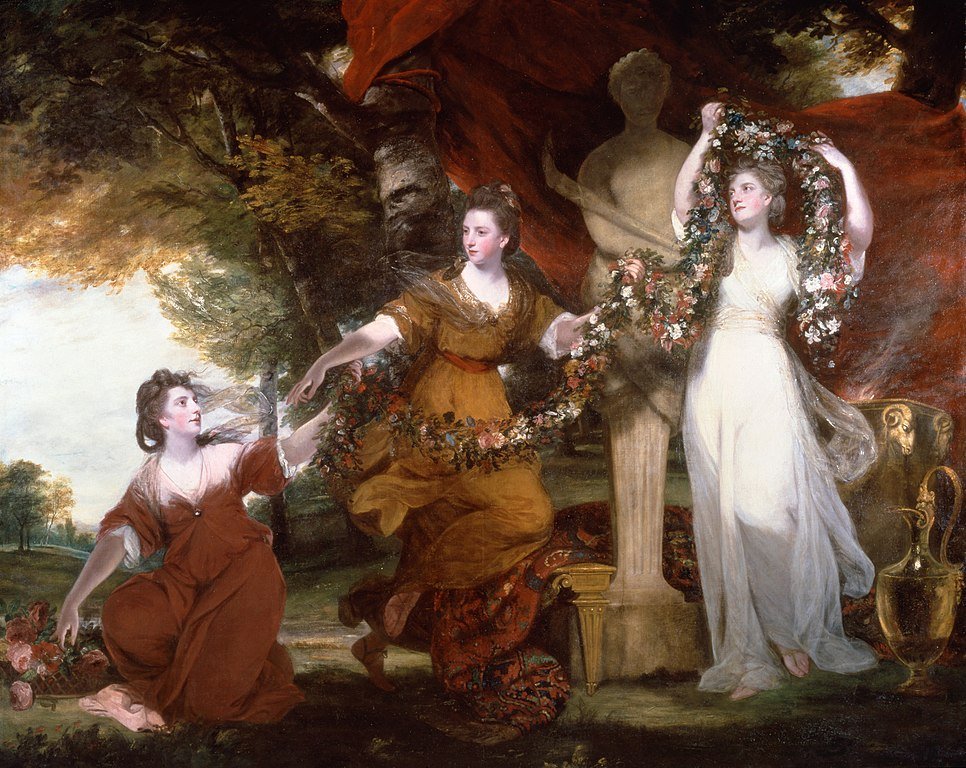
Sir Joshua Reynolds, born on 16 July 1723 and passing away on 23 February 1792, was an influential English portrait painter renowned for his specialization in capturing the essence of his subjects. Reynolds’ artistic journey began with an early passion for art, leading him to apprentice under the esteemed London portrait painter Thomas Hudson.
However, his time with Hudson was relatively brief, lasting only until the summer of 1743. Subsequently, Reynolds embarked on a career as a portrait painter, honing his skills and gaining recognition. He embarked on extensive travels, venturing to Lisbon, Cadiz, Algiers, and Minorca. From there, he continued his artistic exploration, making his way to Livorno in Italy and eventually spending two formative years in Rome.
Over time, Reynolds established himself as a prominent portraitist, revitalizing the genre and elevating its status to that of religious and historical works. His talent and vision led him to merge the English style of portraiture with elements drawn from antiquity and the Old Masters, resulting in grandiose, large-scale depictions of British high society and notable figures of his era, including actors and courtesans.
His compositions often incorporated theatrical elements, such as vibrant props and costumes, picturesque pastoral landscapes, and playful classical symbolism. Reynolds’ artistic legacy endures as a testament to his profound impact on the art world of the 18th century. Reynolds held the distinction of being the founder and first president of the Royal Academy of Arts, earning him a knighthood from George III in 1769.
Maurice-Quentin de La Tour
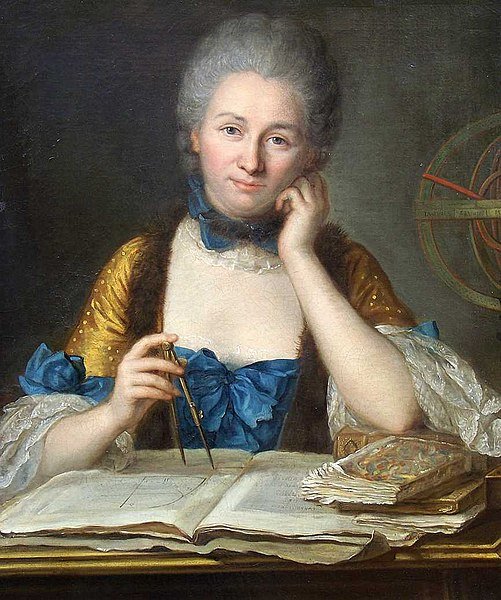
Maurice-Quentin de La Tour, a celebrated French painter of the Rococo era, holds a prominent position in the annals of art history. His artistic prowess is renowned, having immortalized some of the most illustrious figures of 18th-century France. What sets La Tour apart is his unique and captivating personality, evident in the self-portraits where he warmly smiles at the viewer—an uncommon sight among his contemporaries.
La Tour’s signature style revolves around the skillful use of soft, pastel colors, infusing his works with an enchanting and delicate ambiance. His brush captured the essence of influential individuals, including Louis XV, Voltaire, and Madame de Pompadour. The finesse with which he portrayed his subjects in a gentle, flattering light earned him numerous prestigious commissions.
While La Tour’s portfolio encompasses a wide array of portraits, his most remarkable achievement remains the Portrait of the Marquise de Pompadour (1748). This masterpiece showcases his unrivaled ability to capture both the physical likeness and the inner essence of his subject. Throughout his career, La Tour left an indelible mark on the art world, cementing his status as a preeminent Rococo artist and leaving behind a legacy of timeless beauty.
